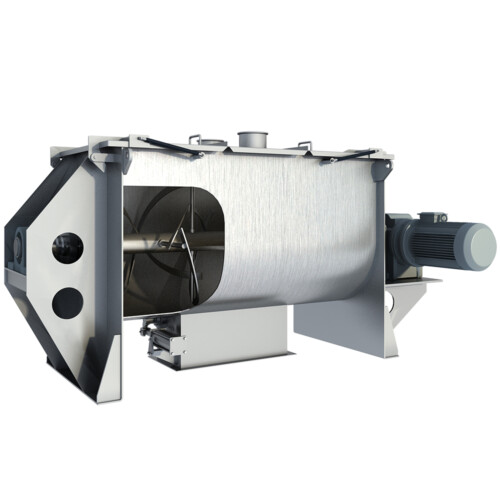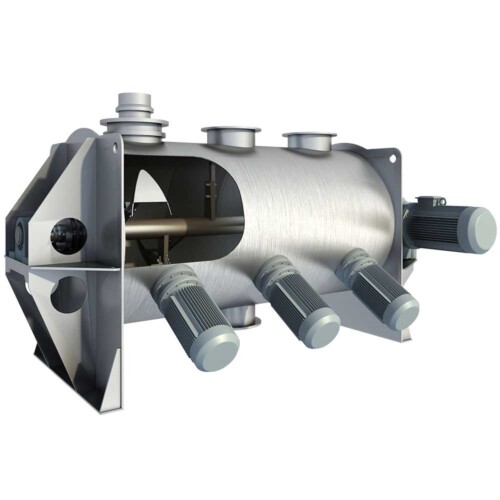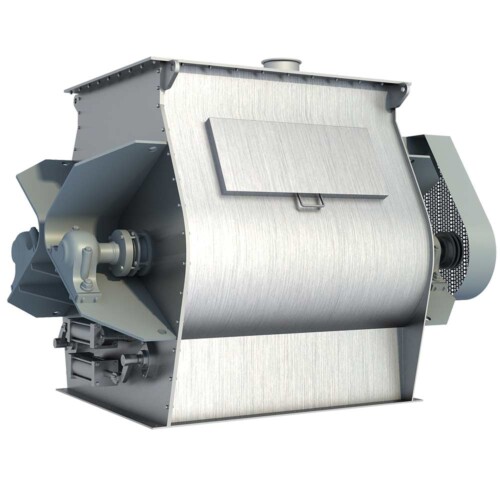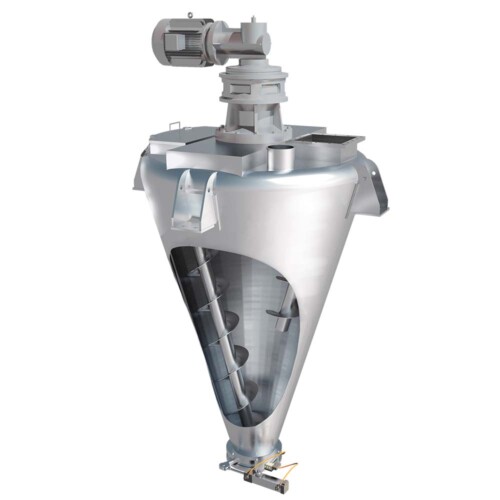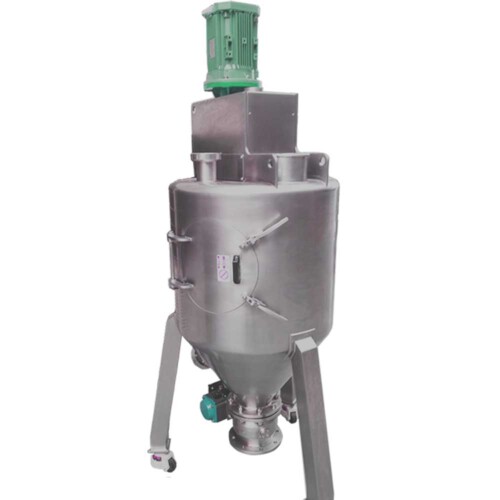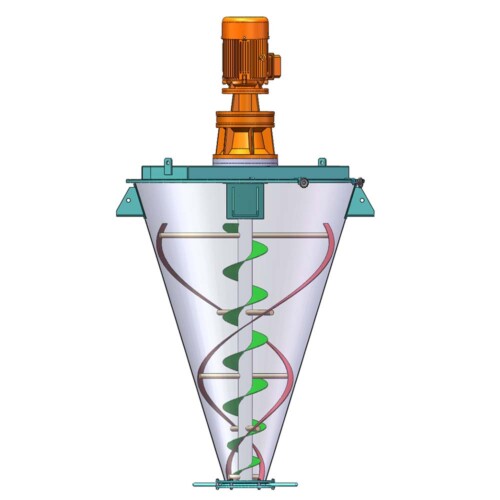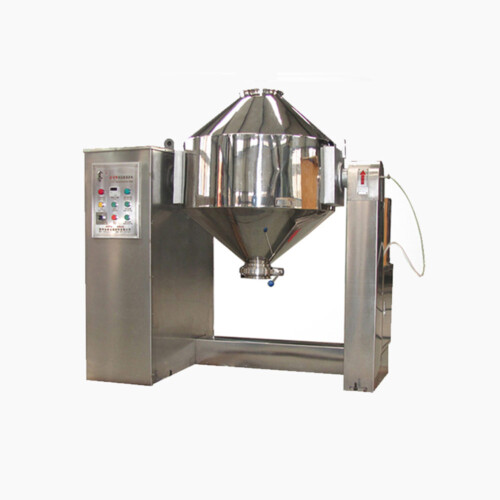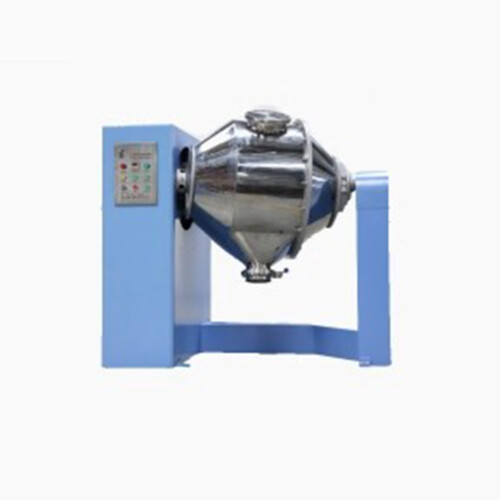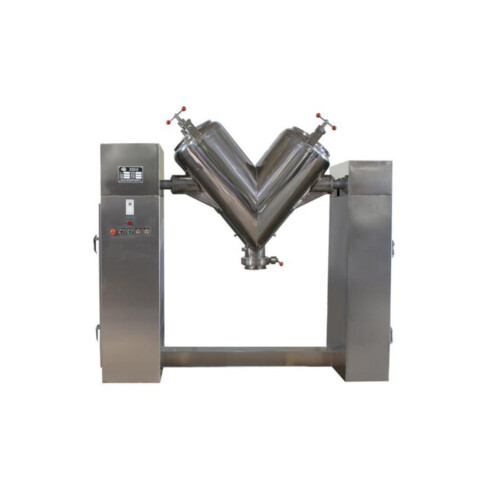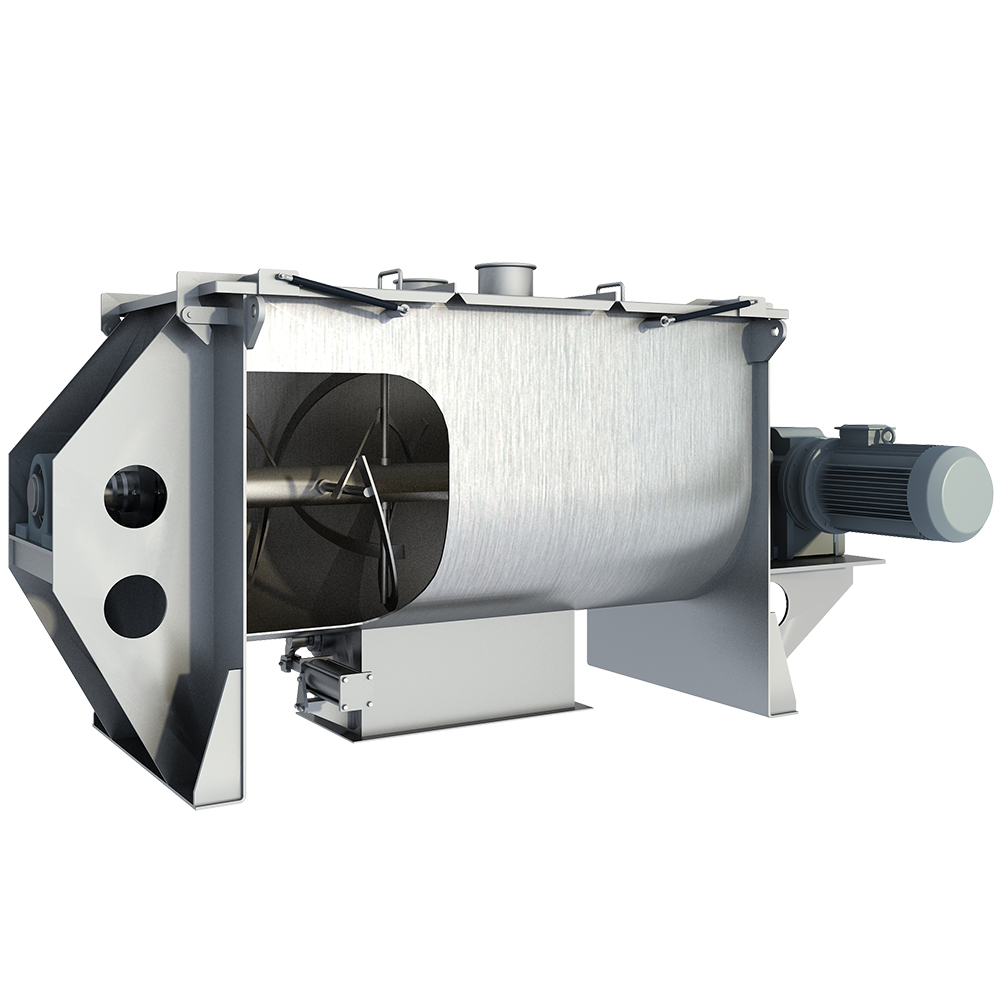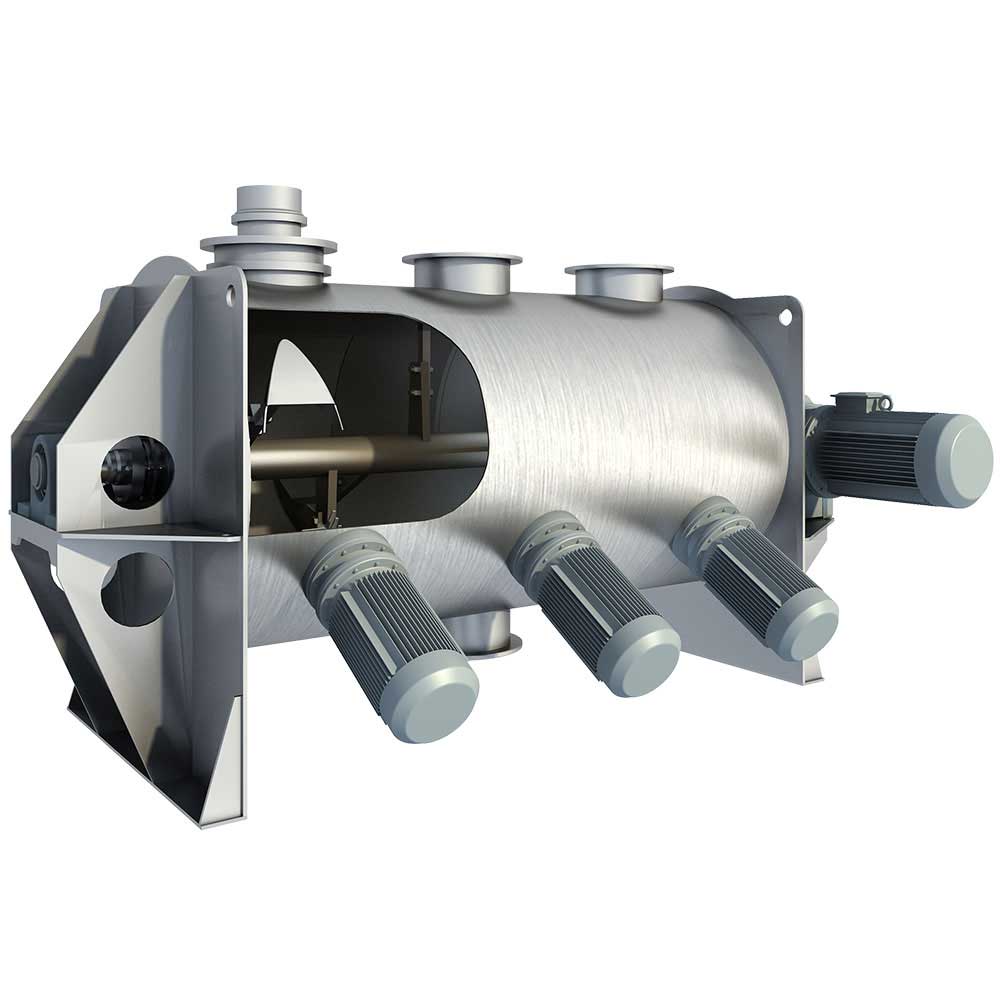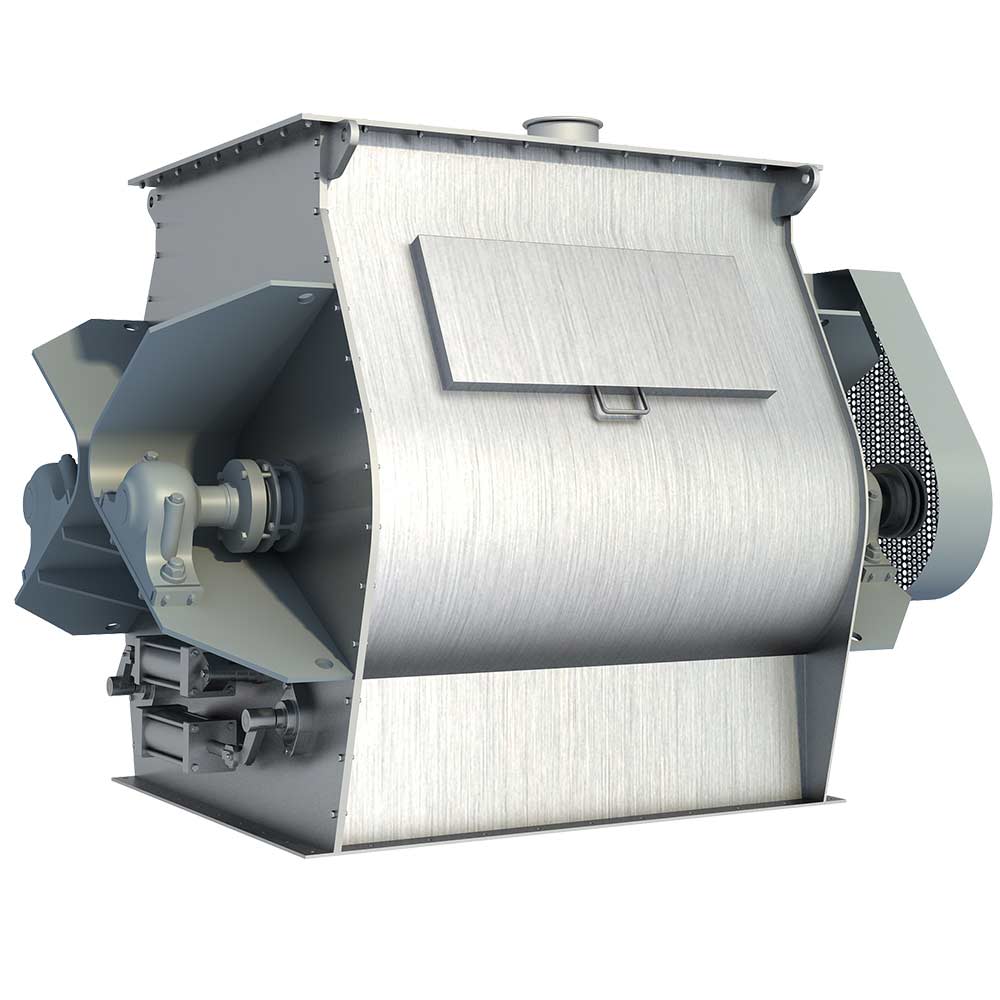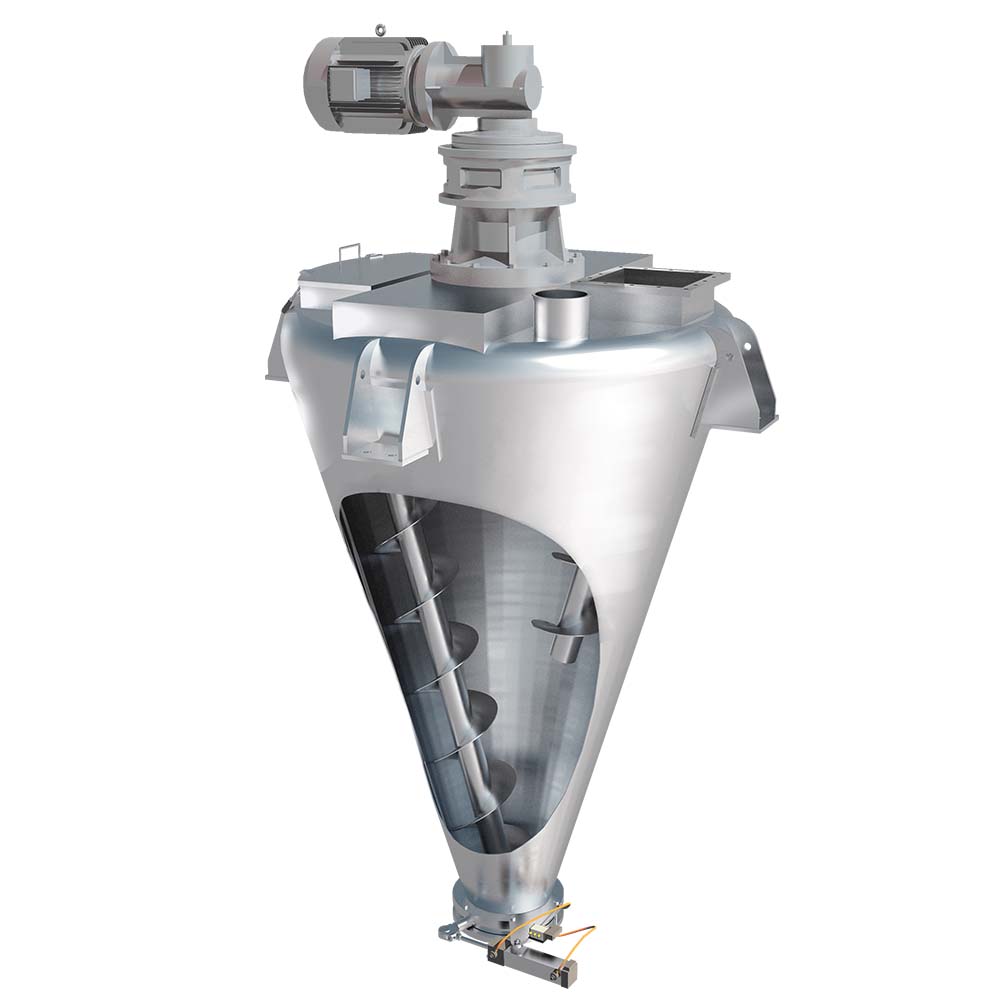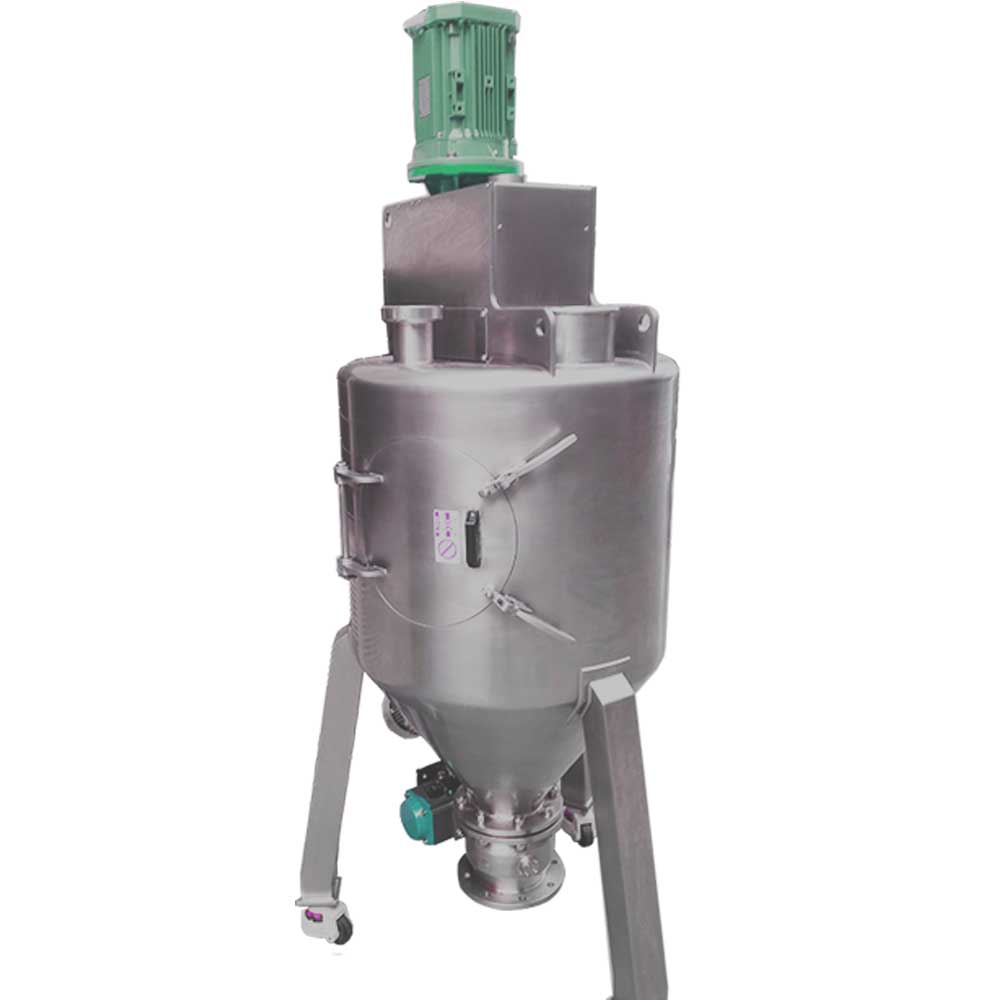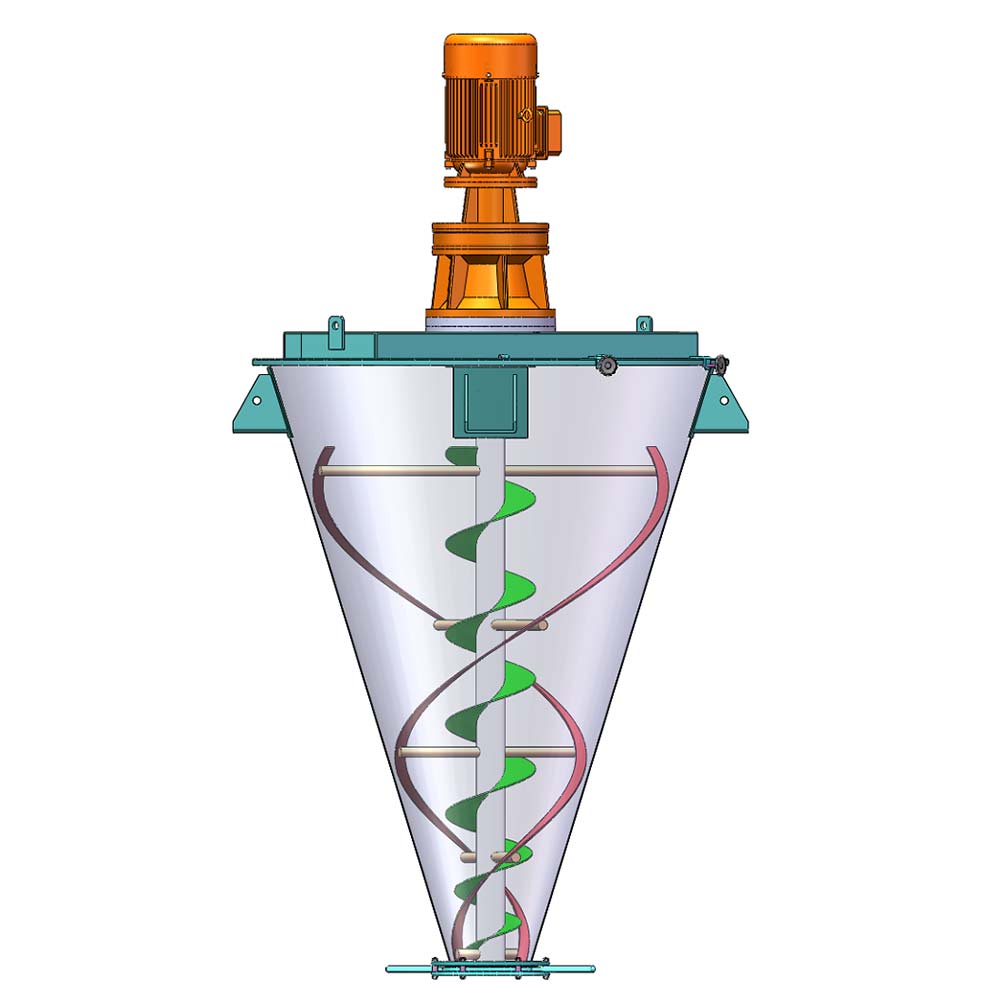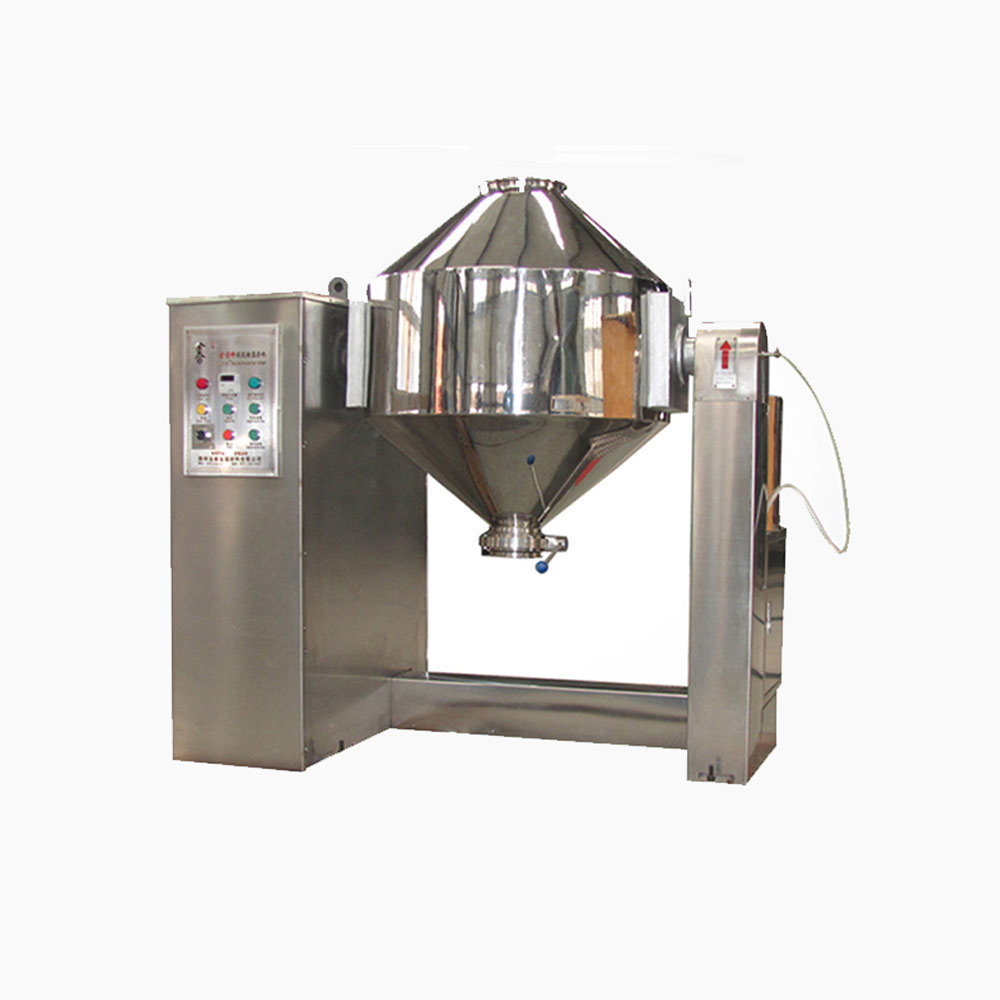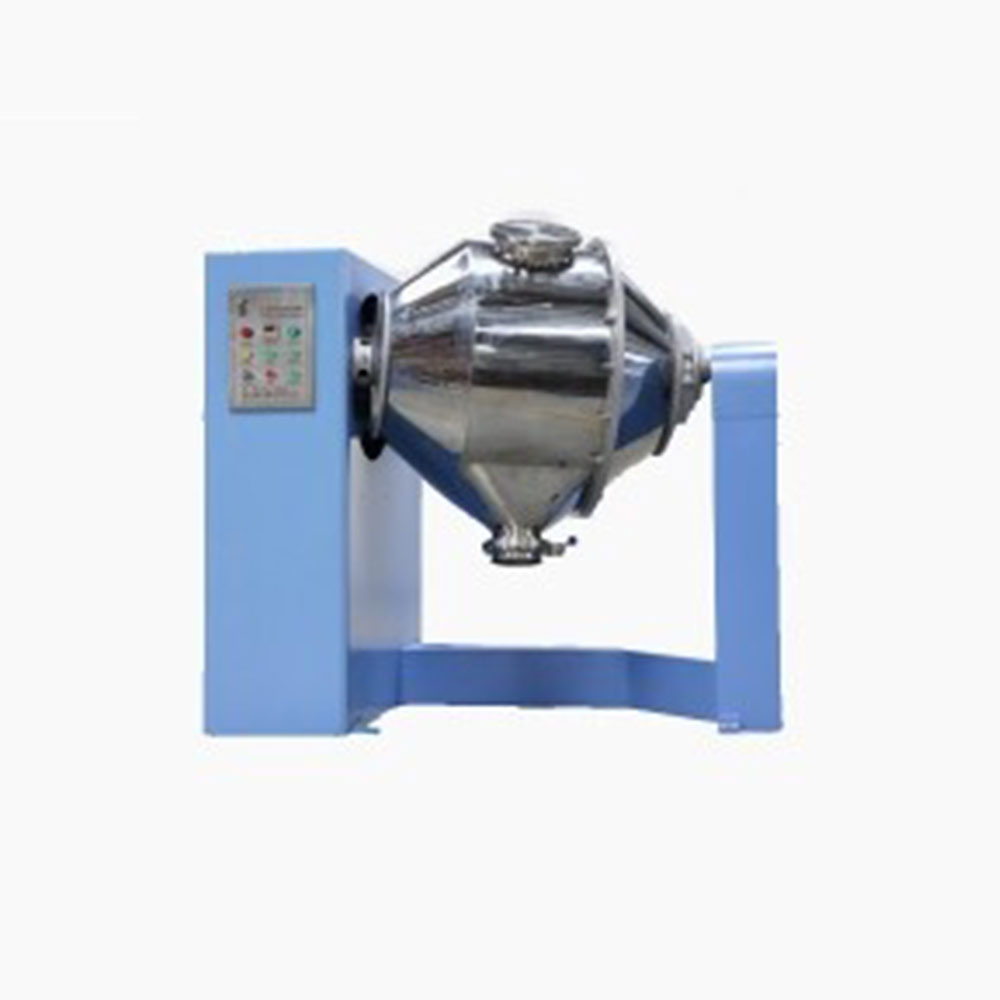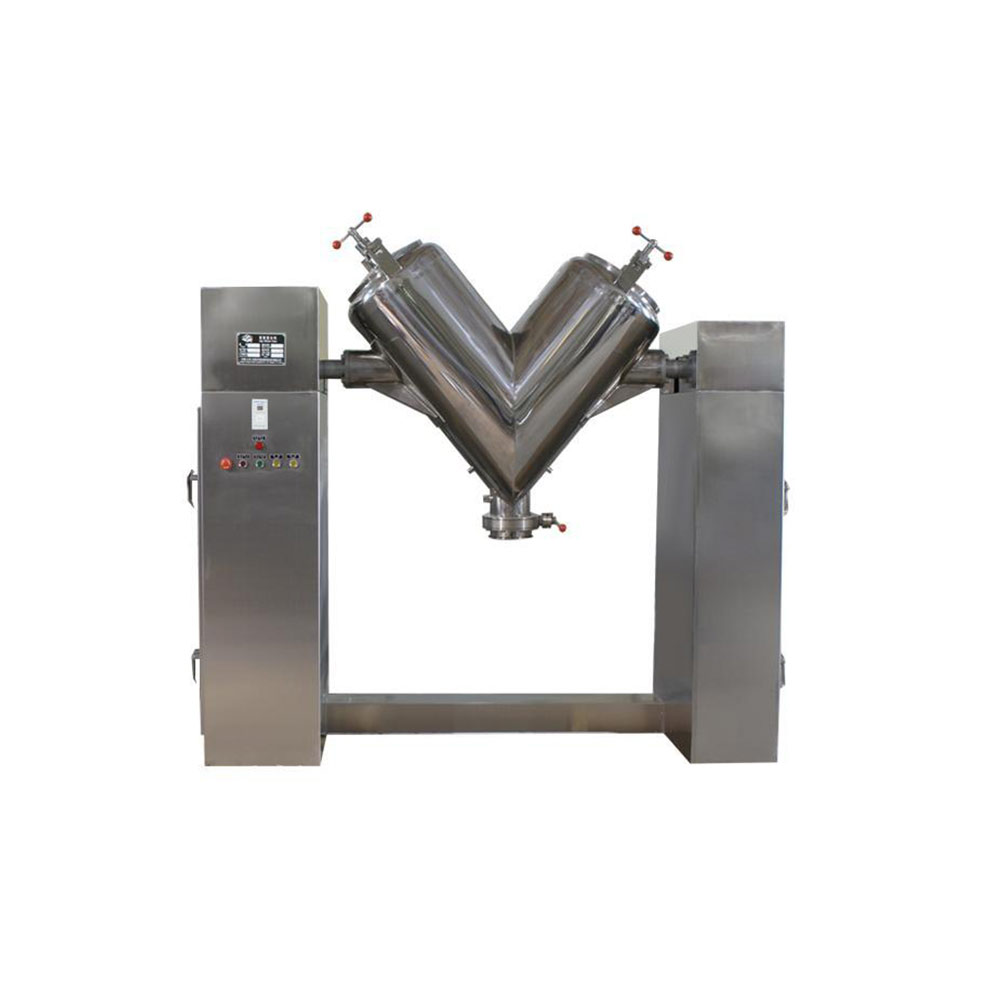Ask An Expert
Frequently Asked Questions
Yes, We can supply simple stand alone panels or automated PLC controlled systems. We normally install and test all controls on our mixers before they are shipped.
Yes, we normally test the mixers before they are shipped and mark out the wire need to connect on the control box.
We manufacture specialty mixing equipment for powder & bulk materials. Included are ribbon blender, plough mixer, conical screw mixer, twin shaft paddle mixer, V blender, double cone blender and other auxiliary equipment such as screw conveyor, quantitive auger filler.
We sell across the world, our cusotmers distribute 5 continents.
Share Us With Your Network
Selecting the Appropriate Powder Blender
Selecting a powder blender can appear to be a simple task, the importance of which is often under-estimated. Although there are a few common varieties that seem to work well for powders and other solids, hastily choosing any blender can result in process inefficiencies or poor product quality. In a competitive market, gains in process efficiency and quality can be the difference between profits and losses. Therefore, choosing wisely is an important decision. The first step is to look at the candidates. The three most popular powder blenders are ribbon blenders, vertical blenders, and tumble blenders.
Ribbon blenders consist of a horizontal agitator mounted in a U-shaped mixing trough. The agitator shaft has an outer ribbon, which is located in close proximity to the trough. A second ribbon on the agitator shaft is located closer to the axis of rotation. This inner ribbon is pitched so that it motivates product in the opposite direction of the outer ribbon. While operating at approximately 400 ft/min, the ribbon blender is capable of blending solids in very short cycle times.
The vertical blender vessel is cone shaped and includes a single auger agitator. The auger, which has a constant diameter and pitch, is located parallel and in close proximity to the vessel sidewall. In addition to rotating on its own axis, the auger agitator is also rotated around the center axis of the vessel, which sweeps the vessel sidewall over the full circumference. The auger lifts materials from the bottom of the vessel to the top. As a result, material opposite the auger cascade down toward the bottom of the vessel to fill the void created. The type of agitation is very gentle on the materials and consumes low energy.
Tumble blenders are either double-cone or V-shaped and rotate on horizontal axis approximately mid-height on the vessel. With an appropriate batch volume, the contents are split every time the vessel is inverted. The speed of rotation is adjusted so the contents slide to the lower portion of the vessel as it is rotated. The V-shaped tumble blender offers a thorough and gentle mixing action that can be optimized using mathematical formulas, since the splitting of the batch is somewhat predictable.
Each of these three basic designs has comparative strengths and weaknesses. In selection the appropriate solids blender, it is important to consider the advantages of each design and carefully select the blender that will offer the most benefit for the intended application. The first step toward making a prudent choice is to list and prioritize the characteristics and parameters that are most important to you. Some common examples include:
• Completeness of discharge.
• Ease of cleaning.
• Easily degradable solids.
• Reduction of lumps.
• Space limitations.
• Quantity of each material contained within the batch.
• Heating or cooling requirements.
• Cost.
Completeness of discharge
Tumble blender have the advantage in this category. The shape of the vessel lends itself to complete discharge of most powders without agitator obstruction. Vertical blenders also provide benefit from having a steep cone and nearly complete discharge, but they do contain an auger agitator that can retain minimal powders. Running the agitator can assist in a more complete discharge of materials. Ribbon blenders retain a small quantity of powders since the outer ribbon does not contact or wipe the surface of the trough. But, gravity will not help since the surface is horizontal.
Ease of cleaning
The ease-of-cleaning advantages is tipped in favor of the tumble or vertical cine designs. However, all designs are easily accessible for cleaning. Smoother finishes on the wetted surface improve clean ability.
Easily degradable solids
Tumble blenders and vertical blenders are capable of thoroughly blending materials without affecting particle size or causing other physical damage. The higher speed and agitator surface area in a ribbon blender are capable of imparting more shear stress on delicate materials.
Reduction of lumps
Ribbon blenders are best suited for reduction of agglomerates that are relatively easy to break. High- speed choppers and lump breakers are available as options on all three designs to reduce agglomerates.
Space limitations
Ribbon blender require significant floor space, but have relatively low overhead requirements. Vertical blenders have a small circular footprint but require significant celling height. Tumble blenders typically require the most space to accommodate the mixer base, as well as ample overhead space for the vessel to rotate.
Quantity of each material contained within the batch
Tumble blenders are best equipped to thoroughly blend batches that contain materials present in very minor percentages, such as active ingredients. Vertical and ribbon blenders follow closely in this category.
Techniques such as where and when materials are added to the blender can minimize differences between designs.
Heating or cooling requirements
Drying applications often benefit from having both a jacketed-vessel and a vacuum capable design. All three designs offer this capability.
Cost
Ribbon blender designs are normally the most-effective blender solution, especially when considering volume production. The tumble blender will price similarly on smaller volumes, but is slightly higher in price in larger production sizes. The vertical blender in large production requirements.
Testing
After weighing the strengths and weaknesses of each design, and choosing an initial favored candidate, conducting a small-scale test is the best way to proceed before making a final decision. You will then be able to eliminate guesswork in your choice of the best design for your specific application.

